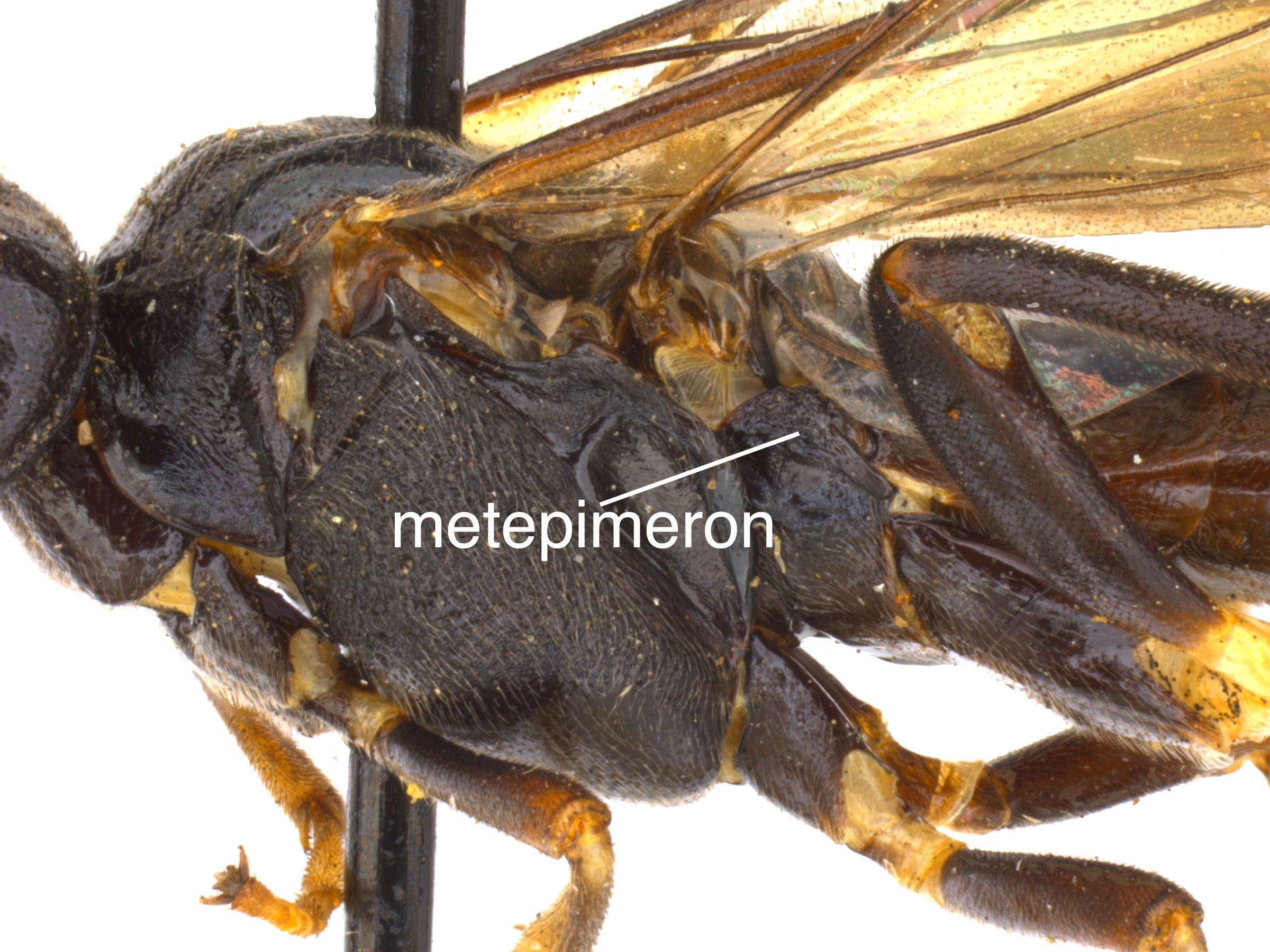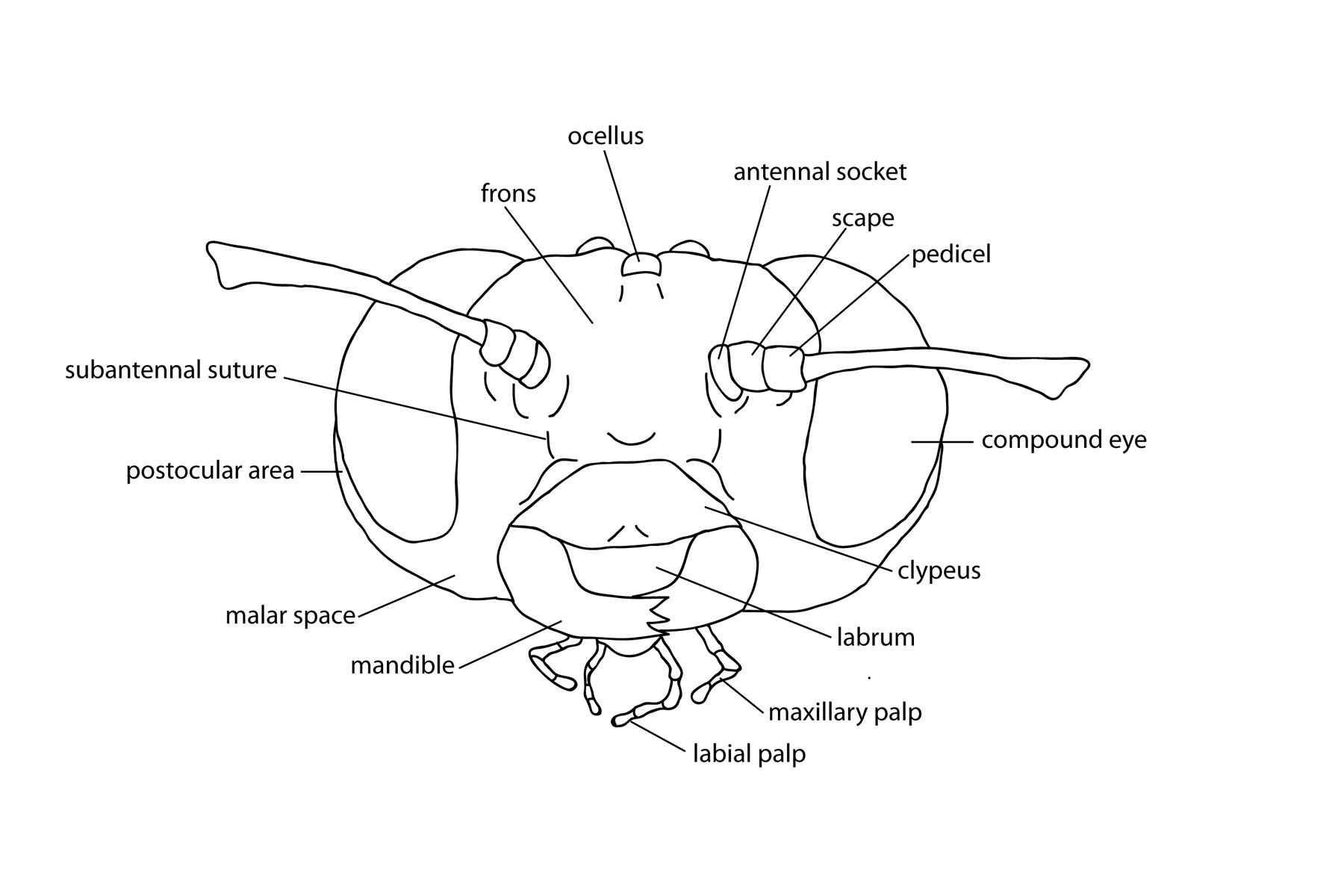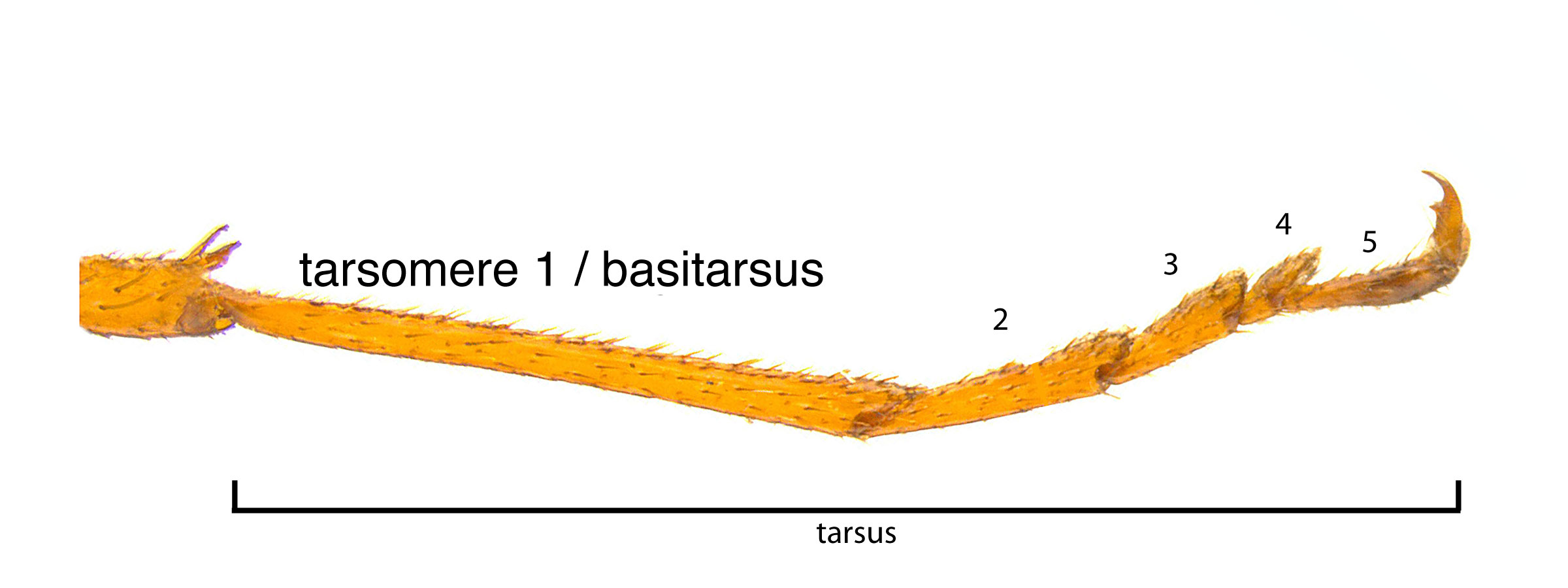Family: Argidae
Family common name: argid sawflies
Subfamily: Sterictiphorinae
Genus: Zynzus D.R. Smith, 1992
Subgenera: none
Argidae are found in all non-polar regions of the world (Smith and Middlekauff 1987Smith and Middlekauff 1987:
Smith DR and Middlekauff WW. 1987. Suborder Symphyta. In: Stehr FW ed. Immature Insects. Kendall/Hunt Publishing Company. Vol. 1: 754 pp., Smith 1992Smith 1992:
Smith DR. 1992. A synopsis of the sawflies (Hymenoptera: Symphyta) of America south of the United States: Argidae. Memoirs of the American Entomological Society 39: 1-201.). They are external foliage feeders with a wide range of host plants. Additionally, the family exhibits some uncommon behaviors like the excretion of defensive compounds and subsocialsubsocial:
Living in aggregations but lacking organizational structure as in true social insects; can describes insects with tendencies to protect or care for thier young, feed gregariously, and build cocoon masses.
habits (Smith 1992Smith 1992:
Smith DR. 1992. A synopsis of the sawflies (Hymenoptera: Symphyta) of America south of the United States: Argidae. Memoirs of the American Entomological Society 39: 1-201.).
Zynzus are small, less than 8 mm in length, and in North America are generally orange and black in color. They are recognized by wing venationvenation:
the network of veins on a wing
, widely set eyes, and short 3-segmented antennaeantenna:
the sensory organ emerging from the front of the head, usually between the compound eyes and above the clypeus; includes the flagellum, scape and pedicel
 , which in males are distinctly forked (Smith 1971cSmith 1971c:
, which in males are distinctly forked (Smith 1971cSmith 1971c:
Smith DR. 1971c. Nearctic sawflies of the genera Neoptilia Ashmead, Schizocerella Forsius, Aprosthema Konow, and Sphacophilus Provancher (Hymenoptera: Argidae). Transactions of the American Entomological Society 97: 537-594., Smith 1992Smith 1992:
Smith DR. 1992. A synopsis of the sawflies (Hymenoptera: Symphyta) of America south of the United States: Argidae. Memoirs of the American Entomological Society 39: 1-201.).
There are 19 species described worldwide. All species occur in North America (Smith 1992Smith 1992:
Smith DR. 1992. A synopsis of the sawflies (Hymenoptera: Symphyta) of America south of the United States: Argidae. Memoirs of the American Entomological Society 39: 1-201., Taeger et al. 2010Taeger et al. 2010:
Taeger A, Blank SM, and Liston AD. 2010. World Catalog of Symphyta (Hymenoptera). Zootaxa 2580: 1-1064.).
A key to North American species of Zynzus is included in Smith 1992Smith 1992:
Smith DR. 1992. A synopsis of the sawflies (Hymenoptera: Symphyta) of America south of the United States: Argidae. Memoirs of the American Entomological Society 39: 1-201..
 (Smith 1992Smith 1992:
(Smith 1992Smith 1992: less than width of cenchruscenchrus:
less than width of cenchruscenchrus: (Smith 1992Smith 1992:
(Smith 1992Smith 1992: fused laterally with first tergitetergite:
fused laterally with first tergitetergite: (Smith 1992Smith 1992:
(Smith 1992Smith 1992: R closed at apexapex:
R closed at apexapex: shorter than length of compound eye (Smith 1992Smith 1992:
shorter than length of compound eye (Smith 1992Smith 1992: simple (Smith 1992Smith 1992:
simple (Smith 1992Smith 1992: shorter than remaining tarsomeres combined (Smith 1992Smith 1992:
shorter than remaining tarsomeres combined (Smith 1992Smith 1992: slightly less than or equal to length of head (Smith 1992Smith 1992:
slightly less than or equal to length of head (Smith 1992Smith 1992:The family Argidae can be distinguished from other sawflies by the single-segmented flagellumflagellum:
the third section of the antennae that includes all the segments beyond the pedicel; segments of the flagellum are known as flagellomeres
 of the antennaantenna:
of the antennaantenna:
the sensory organ emerging from the front of the head, usually between the compound eyes and above the clypeus; includes the flagellum, scape and pedicel
 . The genus Zynzus can be distinguished from other genera in the family by the short antennaeantenna:
. The genus Zynzus can be distinguished from other genera in the family by the short antennaeantenna:
the sensory organ emerging from the front of the head, usually between the compound eyes and above the clypeus; includes the flagellum, scape and pedicel
 , the simple tarsal claws, and widely-set eyes. Males are distinguished from related genera Arge and Atomacera by the conspicuous forked antennaeantenna:
, the simple tarsal claws, and widely-set eyes. Males are distinguished from related genera Arge and Atomacera by the conspicuous forked antennaeantenna:
the sensory organ emerging from the front of the head, usually between the compound eyes and above the clypeus; includes the flagellum, scape and pedicel
 (Smith 1992Smith 1992:
(Smith 1992Smith 1992:
Smith DR. 1992. A synopsis of the sawflies (Hymenoptera: Symphyta) of America south of the United States: Argidae. Memoirs of the American Entomological Society 39: 1-201.).
none
Larvae feed on several species of plants from the family Fabaceae: Vachellia farnesiana (sweet acacia), Desmodium (tick-clover), Mimosa grahami (Graham’s mimosa), Desmanthus illinoensis (Illinois bundleflower), Desmanthus sp., and Acaciella angustissima (prairie acacia) (Smith 1970Smith 1970:
Smith DR. 1970. Nearctic species of the genus Ptenus Kirby (Hymenoptera: Argidae). Transactions of the American Entomological Society 96: 79-100., Smith 1978Smith 1978:
Smith DR. 1978. Suborder Symphyta (Xyelidae, Parachexyelidae, Parapamphiliidae, Xyelydidae, Karatavitidae, Gigasiricidae, Sepulcidae, Pseudosiricidae, Anaxyelidae, Siricidae, Xiphydriidae, Paroryssidae, Xyelotomidae, Blasticotomidae, Pergidae). Hymenopterorum Catalogus 14: 1-193., Smith 1992Smith 1992:
Smith DR. 1992. A synopsis of the sawflies (Hymenoptera: Symphyta) of America south of the United States: Argidae. Memoirs of the American Entomological Society 39: 1-201.).
Immature Zynzus are not well described. Those that have been observed are external leaf feeders that spin cocoons in leaf litter to overwinter and pupate (Smith 1993Smith 1993:
Smith DR. 1993. Systematics, life history, and distribution of sawflies. Pp. 3-32. In: Wagner MR and Raffa KF, eds. Sawfly Life History Adaptations to Woody Plants. University of Minnesota Academic Press. 581 pp.). LarvaeLarva:
the immature stage of holometabolous insects
 of Zynzus bicolor are green and white striped (BugGuide 2019BugGuide 2019:
of Zynzus bicolor are green and white striped (BugGuide 2019BugGuide 2019:
BugGuide. Accessed January 2019. https://bugguide.net).
World: This genus is restricted to the United States and Mexico (Smith 1992Smith 1992:
Smith DR. 1992. A synopsis of the sawflies (Hymenoptera: Symphyta) of America south of the United States: Argidae. Memoirs of the American Entomological Society 39: 1-201.).
North America: Within the United States, Zynzus is commonly found in the Southwest, including California, Arizona, New Mexico, and Texas. One species, Z. nigropectus, has a more eastern range that encompasses Oklahoma, Arkansas, Louisiana, and Mississippi. In Mexico, Zynzus is widespread as far south as Veracruz (Smith 1992Smith 1992:
Smith DR. 1992. A synopsis of the sawflies (Hymenoptera: Symphyta) of America south of the United States: Argidae. Memoirs of the American Entomological Society 39: 1-201.).
Map data from: GBIF.org (26 June 2019) GBIF Occurrence Download Zynzus
Details about data used for maps can be found here.